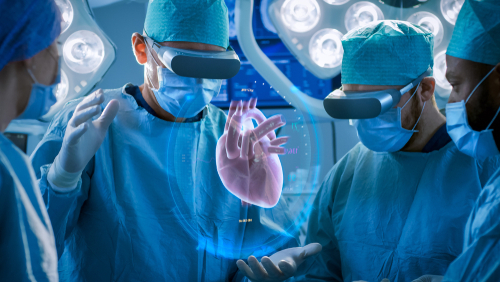
People torn between interests in animation and medicine may wonder if there is a way to combine the two in a relevant career. Not only is it possible, but it is a reality. Medical animators work in many areas including medical education, patient care and education, medical and pharmaceutical sales, gaming and even in the legal arena. What is a medical animator, and what do some of these intriguing careers look like?
What is a Medical Animator?
An animator is someone with education and experience in 2-and 3-D animation, software program design and use and general design principles among other knowledge sets and skills. In addition to this, medical animators have training in biological sciences including anatomy, biology, kinesiology and others. Animators often take courses in media and communications as well. The professionals in this field use their knowledge and proficiencies to translate complex medical information into visual forms that patients, doctors, consumers and others can easily understand.
What Animators Do
Careers available to these animators include:
Medical Education – In the past, medical textbooks were illustrated by artists who drew 2-D pictures of anatomy or surgical and medical procedures. These were used by medical schools to train doctors and nurses. Now, however, computer technology enables educators to present this information to medical students in a 3-D animation which is more realistic and enables them to follow movements and procedures. Animators, especially those proficient in 3-D animation, are employed by schools and by curriculum creators to animate body systems and processes. They also recreate surgeries and simulate emergencies during operations.
Additionally, many hospitals now have online portals that allow patients to understand and proactively manage their conditions. Medical animators are the link between students or patients and vital information that might otherwise not be understood.
Pharmaceuticals and Medical Equipment – Medical animators are employed by pharmaceutical companies to create animations of how their drug works in the body. They also create videos, presented to hospital boards and others, that illustrate the functions and advantages of medical equipment for companies that market the new technologies.
Forensics and Medical Animators – These animators create “forensic, mechanical, industrial, anatomical, pathological and surgical content for litigation.” In other words, they allow judges and juries to see how crimes took place, the causal issues and ramifications of certain actions taken by a defendant in a criminal or negligence case. At one time, artists drew a 2-D representation of a crime scene, for instance, that was submitted into evidence. Now animators can create a 3-D representation that even allows lawyers to interact and predict outcomes by changing certain factors.
Training Emergency Personnel – Medical animators create simulations used to train emergency responders to react in spontaneous situations. These animations, for example, can simulate a sudden arterial bleed, a stroke or a heart attack. They can allow the person to “work” on a patient who has drowned or react to a woman giving birth.
Education
The Association of Medical Illustrators reports that most medical animators have at least a two-year master’s degree in medical illustration. There are only three of these programs in the United States, and one in Canada, so competition to get into the degree programs is high.
Courses included in the degree are medical courses such as anatomy (with dissection), pathology, embryology among others. There are also applied art courses such as surgical illustration, and general art courses in color theory, design and other areas. Animators also need computer science skills such as interactive media, 3-D modeling and web design. Most programs require a master’s thesis or project, and some require students to select a specialization area. The Board of Certification of Medical Illustrators offers a voluntary certification program.
What Do They Earn
According to the Bureau of Labor Statistics the median salary for these professionals is $72,520 or $34.87 per hour. Most are employed on the west coast where the median wage is $87,960, or on the east coast, where medical animators earn a median salary of $102,630.
The career of 3-D animation grew from the technology behind video gaming. The growth of that industry indicates that there will be a need for animators as well. So, people who cannot decide between a career in animation and their fascination with medicine can choose a career where they use both.
Related Resources:
Which Schools Have the Best Animation Programs?
How Much Math Should I Study if I Want to Become an Animator?
What High School Classes Can I Take That Will Help Prepare Me for a Degree in Animation?
Are There Online Programs That I Can Get a Degree in Animation?
Are There Degrees in Criminal Justice Programs That Use Animation?
